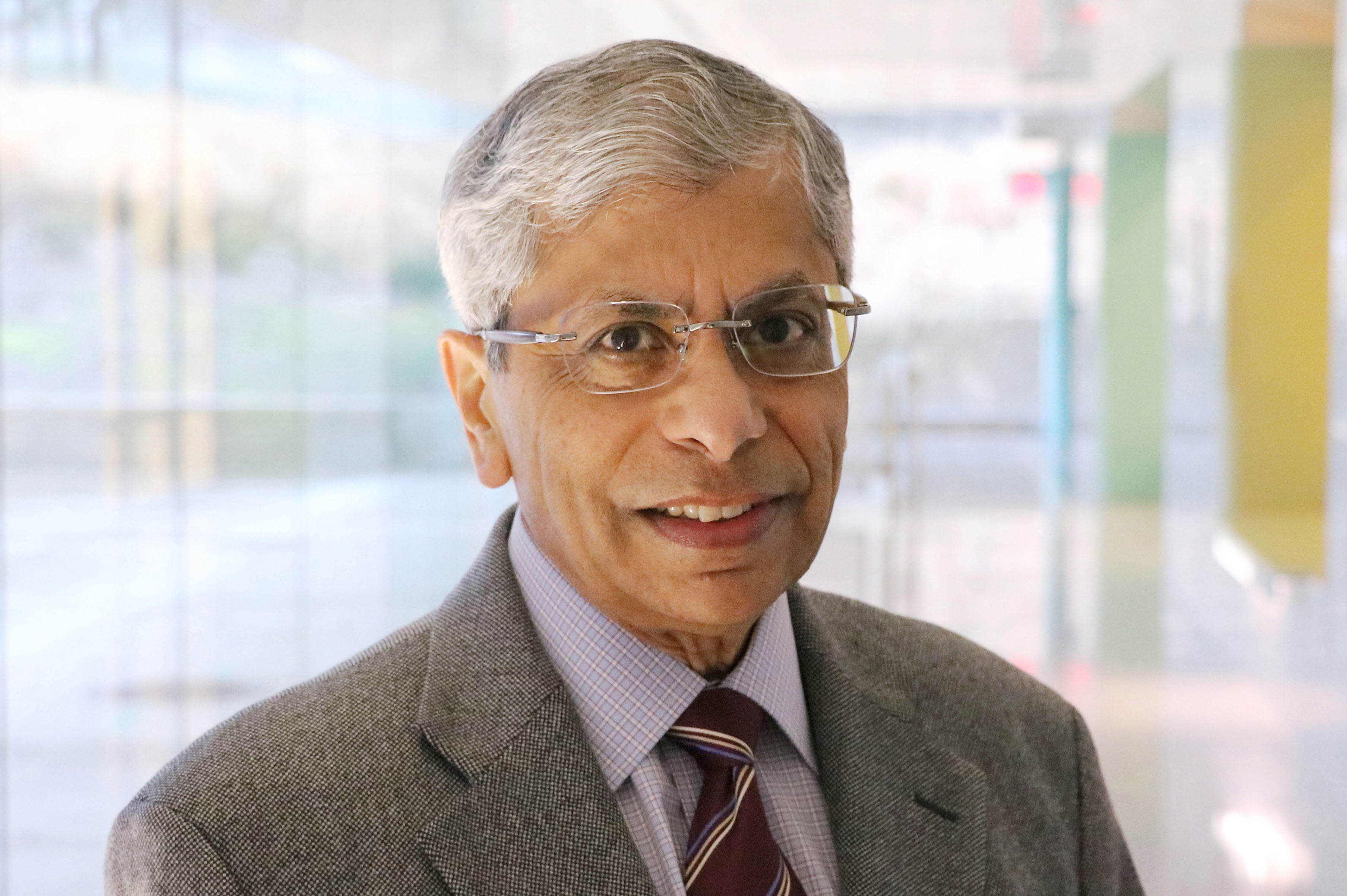Pallab Bhattacharya To Receive 2008 John Bardeen Award

 Enlarge
EnlargePallab Bhattacharya

Professor Pallab Bhattacharya, the Charles M. Vest Distinguished University Professor of Electrical Engineering and Computer Science and James R. Mellor Professor of Engineering, will be honored this March in New Orleans, when he will be presented with the 2008 John Bardeen Award at the annual meeting of The Minerals, Metals and Materials Society (TMS).
The Bardeen Award recognizes an individual who has made outstanding contributions and is a leader in the field of electronic materials. John Bardeen’s career of theoretical and experimental research set the foundation for the current state of understanding of electronic materials. His primary contributions were the invention and development of the solid-state transistor and the theory that developed greater understanding of superconductivity. He is the only person to have received the Nobel Prize twice in the same subject (physics).
Professor Bhattacharya will receive this award for his pioneering contributions to the epitaxy and characterization of strained semiconductor heterostructures and self-organized quantum dots and their device applications.
“It is a distinct honor to be recognized by TMS and my peers as recipient of the 2008 John Bardeen Award,” said Bhattacharya. “It is a tribute to all my students, research associates and collaborators. It is very special to be associated with this award that recognizes the name of John Bardeen and his contributions to science.”
Since coming to the University of Michigan in1984, Prof. Bhattacharya has pioneered technological advances in synthetically modulated semiconductor structures, nanophotonic devices, and other optoelectronic device and integrated circuit developments. One of his first breakthroughs was through his work with quantum dots.
While using molecular beam epitaxy to grow semiconductors one atomic layer at a time, in 1988, Bhattacharya and his team noticed that increasing the concentration of indium in ultra-thin layers of the alloy semiconductor InGaAs caused the material to naturally form islands. The pyramidal shaped islands were self-assembling and were subsequently termed quantum dots by virtue of their size. The resultant research Bhattacharya conducted with Prof. Jasprit Singh led to the publication of their seminal paper on quantum dot formation.
In 1996, together with his graduate students and colleague Professor Ted Norris, Director of the Center for Ultrafast Optical Sciences, Professor Bhattacharya demonstrated the first room temperature quantum dot laser. Quantum dot lasers outperform other semiconductor lasers, and are finding numerous applications in communications and other areas. Next, Bhattacharya worked on quantum dot infrared photodetectors, capable of operating at high temperatures, with his graduate student (and now colleague) Jamie Phillips. These detectors are now being inserted into infrared cameras.
More recently, using the spin of electrons and holes in semiconductors, he designed the first spin-light emitting diode and spin-laser. This laser uses the quantum dots and can communicate increased information with decreased power consumption.
Prof. Bhattacharya is currently working on high-speed and high-power quantum dot lasers, quantum dot infrared photodetectors, photonic crystal quantum dot devices, and spin-based heterostructure devices. His group recently demonstrated the first semiconductor based spin valve, spin amplifier and an electrically injected spin laser.
Reflecting on these years of discovery, Prof. Bhattacharya stated, “This has been an incredible journey. There were a lot of non-believers of the potential of these nanostructures and those who proclaimed that quantum dots would not amount to much. But through the complementary work of Norris, Singh, Rachel Goldman (Materials Science and Engineering) and Brad Orr (Physics), and of groups elsewhere, we laid a very strong foundation and the ensuing science and device physics and technology have been very exciting. My students and I have been on a roll for almost 2 decades.”
Professor Bhattacharya is currently Editor-in-Chief of the Journal of Physics D. He has edited Properties of Lattice-Matched and Strained InGaAs (UK: INSPEC, 1993) and Properties of III-V Quantum Wells and Superlattices (UK: INSPEC, 1996). He authored the textbook Semiconductor Optoelectronic Devices (Prentice Hall, 2nd edition), which is still used worldwide.
Professor Bhattacharya has received many professional honors and awards, including the John Simon Guggenheim Fellowship, the IEEE (EDS) Paul Rappaport Award, the IEEE (LEOS) Engineering Achievement Award, the Optical Society of America (OSA) Nick Holonyak Award, the SPIE Technical Achievement Award, the Quantum Devices Award of the International Symposium on Compound Semiconductors, and the IEEE Nanotechnology Pioneer Award. At the University of Michigan, he was awarded the S. S. Attwood Award, the Ted Kennedy Family Team Excellence Award, and the Research Excellence Award from the College of Engineering, and the University of Michigan Distinguished Faculty Achievement Award. He is a Fellow of IEEE, the American Physical Society, the Institute of Physics (UK), and the Optical Society of America.
 MENU
MENU